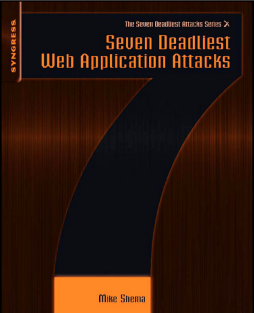
Additional Information
Book Details
Abstract
Seven Deadliest Web Application Attacks highlights the vagaries of web security by discussing the seven deadliest vulnerabilities exploited by attackers. This book pinpoints the most dangerous hacks and exploits specific to web applications, laying out the anatomy of these attacks including how to make your system more secure. You will discover the best ways to defend against these vicious hacks with step-by-step instruction and learn techniques to make your computer and network impenetrable.
Each chapter presents examples of different attacks conducted against web sites. The methodology behind the attack is explored, showing its potential impact. The chapter then moves on to address possible countermeasures for different aspects of the attack. The book consists of seven chapters that cover the following: the most pervasive and easily exploited vulnerabilities in web sites and web browsers; Structured Query Language (SQL) injection attacks; mistakes of server administrators that expose the web site to attack; brute force attacks; and logic attacks. The ways in which malicious software malware has been growing as a threat on the Web are also considered.
This book is intended for information security professionals of all levels, as well as web application developers and recreational hackers.
- Knowledge is power, find out about the most dominant attacks currently waging war on computers and networks globally
- Discover the best ways to defend against these vicious attacks; step-by-step instruction shows you how
- Institute countermeasures, don’t be caught defenseless again, and learn techniques to make your computer and network impenetrable
"The threats highlighted should be understood by web developers, administrators and general users alike. If you use the web in any way then this should be on your bookshelf. In addition to the detailing the threat Shema also provides countermeasures to minimise or remove the risk, but be warned; you may never look at a website the same way again." – Andrew Waite, Security Researcher, InfoSanity Research
